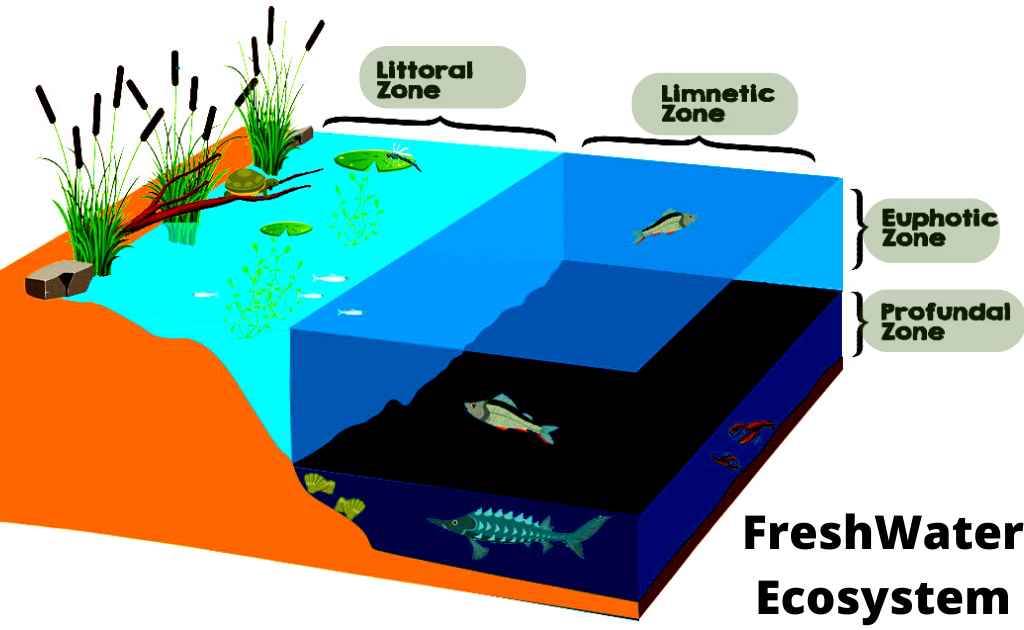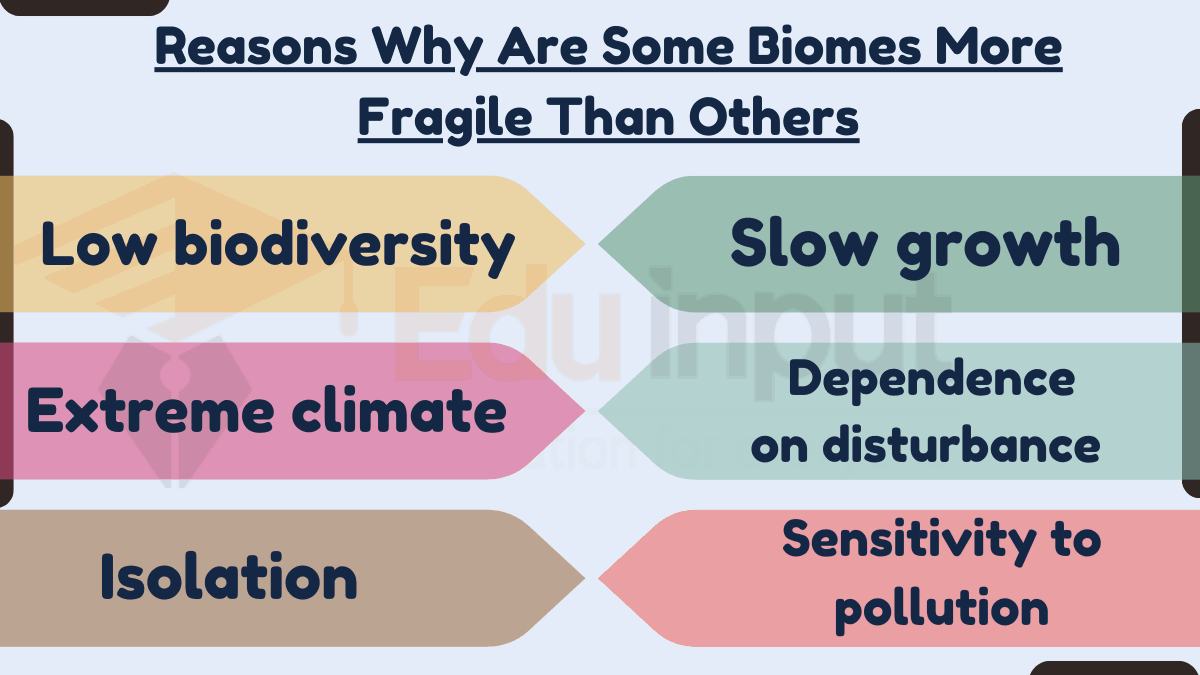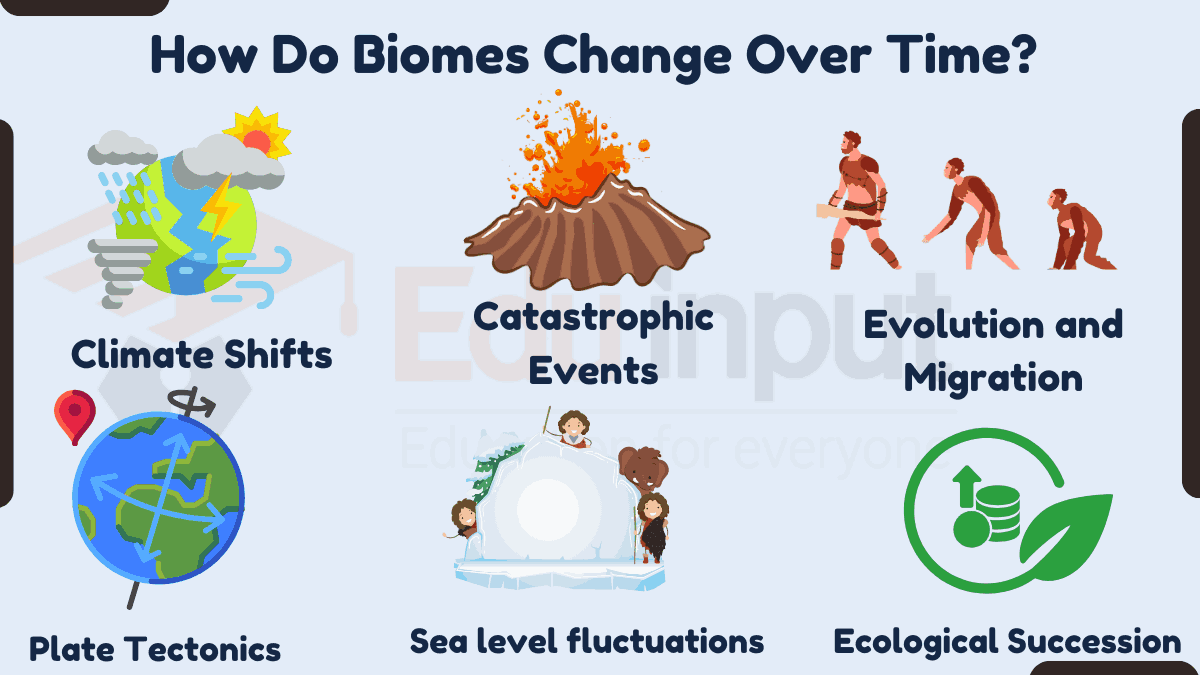Freshwater Ecosystem (Lakes Ecosystem)-Habitats and Zones
The freshwater ecosystem is a type of ecosystem that is linked with life in the aquatic environment. Freshwater lakes have different sizes, depths, and nutrient content. These lakes have distinct life zones and the temperature stratification distribution of life in lakes depends on light, nutrients, and places of attachment.
Freshwater Habitats
There are six major types of freshwater habitats on Earth: lakes, ponds, streams (rivers), springs, rivers, and wetlands. Each type of habitat has its characteristics, including temperature, salinity, pH, and oxygen concentration.
Lakes are bodies of standing water that is surrounded by land. Lakes are often located in valleys or depressions and are fed by underground water systems. Lakes are not connected and do not flow continuously.
A lake is considered fresh if it contains enough dissolved oxygen to support aquatic life. Ponds are smaller than lakes and may have vegetation around them. They are typically used for fishing, swimming, boating, and recreational activities. Streams are rivers and creeks that run through the land. They are usually small, slow-moving, and shallow. Springs are holes in the ground that fill with water. Water flows out of these holes and fills pools, streams, and lakes. Rivers are larger than streams and are navigable.
They are sometimes considered lakes because they are wide enough to allow boats to travel on them. Wetlands are areas where water collects and stays for long periods. They are usually covered in grasses, shrubs, and trees. They are home to many endangered species of wildlife.
Zones Of Freshwater Ecosystem
Thus different life zones are formed on basis of the amount of light and nutrients. The lake ecosystem is divided into three main zones.

Littoral zone (Near-shore)
The area near the shore is called the littoral zone. Water is shallow in this zone. Thus the plants find abundant light in this zone. Anchorage (fix) and adequate nutrients are also present in the bottom sediments.
Plants in littoral zones: The littoral zone communities have diverse plans. Some of these plants are water lilies, submerged vascular plants, and algae. These plants flourish at the deepest of the littoral zone. The plants of this zone trap sediment. These sediments are carried by the stream. Thus these plants increase the nutrient content in this region.
Planktons: The microscopic floating organisms are called planktons. Planktons are present among the anchored plants. These are divided into two groups: 8445 Phytoplankton: (Greek drifting plants) The photosynthetic plankton are called phytoplankton. These include photosynthetic protists, bacteria, and algae.
Zooplankton: (Greek drifting animals): The non-photosynthetic plankton is called zooplankton. These include protozoa and tiny crustaceans.
Animals in the littoral zone: This zone has the greatest diversity of animals. Littoral invertebrate animals include small crustaceans, insect larvae, snail flatworms, and Hydra. Vertebrates include frogs, aquatic snakes, and turtles.
The depth of water increases farther from the shore. Thus plants cannot anchor to the bottom. But they still collect enough light for photosynthesis. This open water area is divided into two regions, the upper limnetic zone and the lower profundal Zone.
Limnetic Zone
The open water area where enough light can penetrate is called the limnetic zone. In this zone, enough light penetrates to support photosynthesis.
Producers:
Producers in the limnetic zone are phytoplankton and cyanobacteria (blue-green algae).
Consumers:
The producers are eaten by protozoa and small crustaceans. Finally, the fishes consume these protozoa and crustaceans:
Profundal Zone
The bottom area of a lake where light cannot penetrate is called the profundal zone. here, light is insufficient to support photosynthesis. This area is nourished by detritus. Detritus falls from the littoral and limnetic zone. Decomposers and detritus feeders like snails and certain insect larvae, bacteria, fungi, and fishes live in this zone.







Leave a Reply